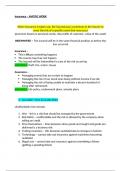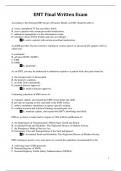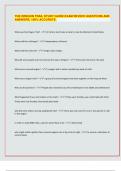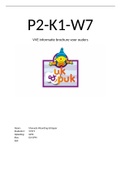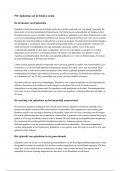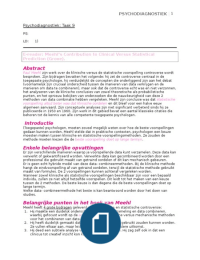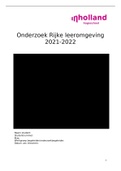When insurance is taken out, the insured pays a premium to the insurer to
cover the risk of a specific event that may occur
(premium based on personal needs, risk profile of customer, value of the asset)
INDEMNIFIED – The insured will be in the same financial position as before the
loss occurred
Insurance –
This is INcase something happens
The events may/may not happen
The insured will be indemnified in case of the risk occurring
EXAMPLES: theft, fire, motor, house
Assurance –
Managing events that are certain to happen
Managing the risk of our loved ones being without income if we die
Managing the risk of being unable to maintain a decent standard of
living after retirement
EXAMPLES: Life policy, endowment plans, annuity plans
1. Insurable + Non insurable Risks
Unaffordable risks include:
1. War – this is a risk that should be managed by the government
2. Bad Debts – unaffordable and the risk is allowed by the company when
selling on credit
3. Price fluctuations – time between when goods are bought and goods are
delivered is a business risk
4. Trading inventory – this becomes outdated due to changes in fashion
5. Technology – cannot take out insurance against machinery becoming
outdated
6. Illegal acts – cannot take out insurance against committing a felony
(getting a speeding ticket)
, 2. Types of Insurance
A) Compulsory Insurance
1. Unemployment Insurance Fund (UIF)
Gives short term relief to workers when they are unemployed, on maternity
leave, have an illness or to dependents of a deceased
Also pay people who have been affected by COVID in 2020
A father or someone in same sex relationship who has had a baby can
claim 10 days
If a surrogate parent was used, one can claim
Adoption leave can be claimed if the adopted child is less than 2 years
old
a) Contributions:
The employee contributes – Responsible for paying the amount
1% of their gross salary to SARS
The employer contributes –
An equal amount to the 1% of employees gross salary
NB – the ceiling amount is R14 872 per month (limit of total contribution)
Max you can claim is R17 712 per month
b) People excluded from the fund:
Employees who work less than 24 hours
Employees who only earn commission
Employees who work for provincial government
c) Recent people added in the fund:
Foreigners working in the country
Employees on learnerships

